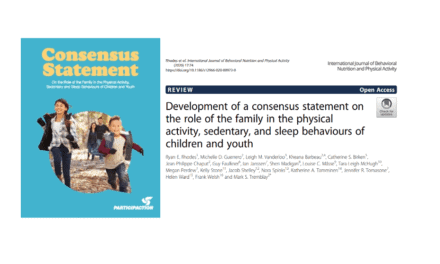Drs. Mark Tremblay (HALO Director), Kristi Adamo (Research Scientist) and Vincent Onywera (former Visiting Scholar to HALO) coauthored a paper, “The Relation between Aerobic Fitness, Muscular Fitness, and Obesity in Children from Three Countries at Different Stages of the Physical Activity Transition,” that was recently published in ISRN Obesity. Citation details are below.
Héroux M, Onywera V, Tremblay MS, Adamo KB, Lopez Taylor J,Jáuregui Ulloa E, Janssen I (2013). The Relation between Aerobic Fitness, Muscular Fitness, and Obesity in Children from Three Countries at Different Stages of the Physical Activity Transition. ISRN Obesity, Volume 2013, Article ID 134835, 10 pages.
ABSTRACT: Background. The physical activity transition is contributing to an increase in childhood obesity and a decrease in fitness worldwide. This study compared body composition and fitness measures in children from three countries and examined intercountry differences in the relationship between these variables. Methods. Participants consisted of 736 Canadian, 193 Mexican, and 179 Kenyan children aged 9–13 years. Body mass index (BMI), waist circumference, triceps skinfolds, aerobic fitness, and muscular fitness were measured. Linear regression was used to examine associations between variables. Results. The prevalence of obesity was the highest in Mexican children (9.2% boys, 8.4% girls) and the lowest in Kenyan children (0.9% boys, 2.8% girls). Aerobic fitness (VO2max in mL/kg/min) was the highest in Kenyan children (50.2 boys, 46.7 girls) and the lowest in Canadian children (41.3 boys, 38.3 girls). Aerobic fitness was negatively associated with body composition measures irrespective of country and sex. Mexican children with low aerobic fitness had higher body composition measures than Canadian and Kenyan children. Muscular fitness was not associated with the body composition measures in Kenyan children but was a weak positive correlate of BMI and waist circumference in Canadian and Mexican children. Conclusion. The current study provides some evidence to support the physical activity transition hypothesis.
Click here to download and read the article for free.





